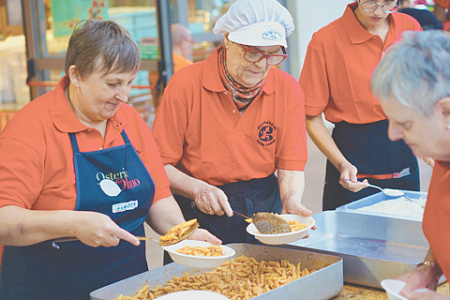
Every year from July 25th to 28th, Italy commemorates the fall of Benito Mussolini’s fascist dictatorship with a unique and powerful tradition: evenings of “anti-fascist pasta.” This nationwide celebration, seemingly unusual to outsiders, is deeply rooted in a pivotal moment of the nation’s history, transforming a simple dish into a potent symbol of liberty and defiance.
The tradition traces its origins to July 25, 1943, the day Italians learned via radio that the once-omnipotent Mussolini had been deposed and arrested. The news sparked widespread joy among a populace weary from decades of tyranny and war. In the small town of Campegine, the seven Cervi brothers, a family known for their staunch anti-fascist beliefs, decided to mark the occasion by cooking and distributing vast quantities of spaghetti, served simply with butter and Parmesan cheese, to their fellow townspeople. This act of communal joy, however, was a prelude to tragedy.
Following Mussolini’s rescue by Nazi special forces and his installation as the leader of the German puppet state in northern Italy, the Republic of Salò, the Cervi brothers joined the partisan resistance. Their family farm became a sanctuary for wounded fighters and escaped Allied prisoners of war. Their fight for a free Italy was cut short when all seven brothers were captured by fascist forces and executed on December 28, 1943. Today, their farmhouse is a memorial museum, serving as the symbolic heart of the annual pasta celebrations.
The selection of spaghetti was no accident; it was a deliberate, silent act of political rebellion. The fascist regime, in its quest for national self-sufficiency and a warped vision of modernity, had actively campaigned against pasta. In the 1920s and 30s, pasta was still largely a regional food of the south, and Mussolini’s government, promoting rice through its “Battle for Grain” initiative, dismissed it as a “foreign food” that made Italians lazy and pessimistic. This view was amplified by the Futurist movement, whose 1931 manifesto attacked pasta as an obstacle to Italy’s progress.
By defiantly serving pasta, the Cervi family reclaimed it as a symbol of the very freedom the regime sought to crush. Over the past decade, this commemorative act has seen a dramatic resurgence, with over 300 registered “anti-fascist pasta” events now held across Italy. Organizers see this growth as a necessary response to a worrying trend. “Recently, those irritated by the anti-fascist essence of our memory and our republic have raised their heads, lost their shame, and declared their nostalgia,” stated Mirko Zanoni, a cultural coordinator at the Cervi House museum. He offered a stark reminder of the tradition’s enduring relevance: “The end of fascism, unfortunately, does not mean the end of fascists.”
